by Carol A Westbrook
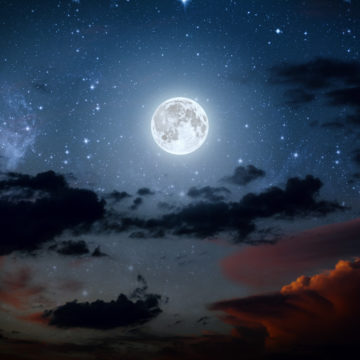 Men have always wanted to fly to the moon and stars. We wanted to find out what was up there on the moon and planets? Was it heaven? Were there angels? Or were these worlds inhabited by strange creatures who built canals? We looked up, we used telescopes. We watched the stars and charted their movements. But we wanted to do more than look and imagine; we wanted to go up there and see for ourselves? The birds could fly, why couldn’t we?
Men have always wanted to fly to the moon and stars. We wanted to find out what was up there on the moon and planets? Was it heaven? Were there angels? Or were these worlds inhabited by strange creatures who built canals? We looked up, we used telescopes. We watched the stars and charted their movements. But we wanted to do more than look and imagine; we wanted to go up there and see for ourselves? The birds could fly, why couldn’t we?
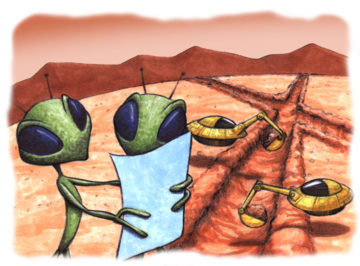
But man remained earthbound until that historic day in 1903, when the Wright brothers left the ground at Kitty Hawk in the first manned, self-propelled flight. The age of flight began. Barely fifty years later, Sputnik was launched into space. Ten years later man walked on the moon. We watched the moonwalk with great excitement and anticipations. We knew it was now just a matter of time before we ourselves would get our own chance to do the same—to experience weightlessness of space, to see the moon up close, to walk on the surface of the moon.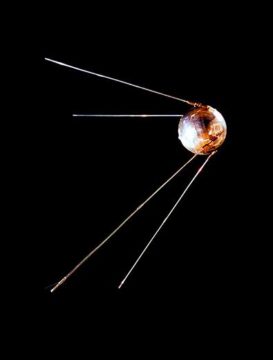
So we waited. And waited. We dreamed about space travel, wrote books and made movies about it. “Fly Me to the Moon,” Frank Sinatra sang for us. (Click here for the song.) We grew old, and we still waited. The longer we waited, the further our dreams seem to get. Initially there were plans for more flights to the moon and perhaps a settlement, followed by exploration of Mars. Instead, NASA launched the International Space Station, or ISS.Travel to the ISS was to be by the space shuttle. Maybe we could hitch a ride and go along, too? But after the tragic crash of the Space Shuttle in 1986, in which everyone aboard perished, including the first civilian passenger, Sharon McAuliffe, NASA said, “no more civilians in space.” The shuttle project was cancelled.
Ironically, canceling the space shuttle opened the way for space tourism by encouraging private enterprise to transport astronauts and supplies to the ISS. Initially, NASA was forced to pay the Russian company, Soyuz, to ferry astronauts–a situation many Americans found galling. This created a demand for other means to supply the ISS. American entrepreneurs stepped up to the plate to develop their own space flight capabilities to carry astronauts. And if private flights could carry astronauts, they could very well carry private citizens.
The time for civilian flights into space was at hand. This summer we watched anxiously—and jealously—as the first commercial rockets took paying customers into space.
The first such flight took place on July 11, 2021, on Virgin Galactic’s Unity Space Ship. Richard Branson, the founder of the Virgin Group, flew with 5 other crew members to an altitude of 262,000 feet above the earth, at the edge of space. The 6 passengers experienced about 5 minutes of weightlessness and a spectacular view of the dark sky above the curvature of the earth. The launch and recovery in this flight was beautiful to behold, as you can see in this video of the launch. (click for flight of Unity) The space capsule was carried up by Virgin Galactic’s twin-fuselage White Knight plane, and released from the center of the carrier craft at an altitude of around 45,000 ft. It continued under its own power to 262,000 feet, roughly 50 minutes after takeoff. It then glided smoothly to a runway landing in their facility in Spaceport America in New Mexico.

Several days later, on July 20, 2021, Blue Origin, founded by billionaire Jeff Bezos, launched their ship, New Shepard, from their facility in the West Texas desert. The ship reached 328,000 feet above the earth, which is commonly recognized as the altitude where the atmosphere ends and space begins. New Shepard returned to Earth in a smooth parachute landing minutes later. This ship carried 4 passengers: Jeff Bezos, his brother Mark, Mary Wallce Funk–a longtime advocate for women in space–and Oliver Daemen. At the time Funk, 82, was the oldest person ever in space, while Daemen, 18, was the youngest. Daemen rode in a seat purchased at a charity auction by his father.
The third company to launch a tourist flight was SpaceX, owned by Elon Musk, the founder of Tesla. On Sept 15, 2021, SpaceX launched its own aircraft carrying 6 civilians aboard. This flight, on the SpaceX Dragon capsule “Resilience” was chartered by billionaire Jared Isaacman. The flight carried Isaacman and 3 other passengers: physician assistant Hayley Arcenaux, data engineer Chris Sembroski, and geoscientist Sian Proctor. Unlike the brief Virgin Galactic and Blue Origin trips to the edge of space, this was an orbital flight. The flight reached 363 miles into space and orbited for 3 days. On Sept 18 they returned by capsule, which splash-landed in the ocean near Panama City, Florida. Though SpaceX had previously launched a flight carrying astronauts to the International Space Station, the September 15 flight carried only civilians. This was the first true orbital flight into space by civilians
These flights showed that it was possible for people like to be space tourists. It wasn’t necessary to be a young, healthy athlete, to be trained as an astronaut, to be a member of NASA, or even to have any flight experience. All it takes is the purchase of a ticket.
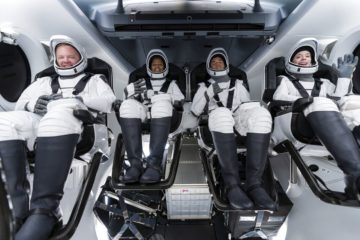
The most expensive ride was the SpaceX trip, where Isaacson paid $200 million to purchase all the seats, at $50 million per passenger, shown at the left. Admittedly the entire flight lasted 3 days and required extensive training, which was a much bigger trip than the two brief sojourns to the edge of space. A ride on Blue Origin cost Daemen’s father $28 million, purchased through a charity auction. The cost of a ticket for a new trip is likely to be considerably less. A ticket to the edge of space on a Virgin Galactic flight will cost $250,000, and 600 people have already made reservations on Virgin Galactic or Blue Origin. Among these celebrities was William Shatner, who played Captain Kirk on the popular TV series, Star Trek. He flew on Virgin Galactic recently, making him, at age 90 the oldest man to fly to space. All of these ticket prices are bargains, when you consider that NASA pays $86 million for an astronaut’s seat on the Russian Soyuz rocket, and $64 million for the same ride on a SpaceX Dragon rocket.
It’s exciting that you can now buy a ticket to space, but for most of us it is a day late and a dollar short—thousands to millions of dollars short, to be exact. Like many other earthbound folks, I wondered why it cost so much to fly into space, whether the costs would ever come down enough for the average Joe (or Jill) to book a ticket. I also wondered how I could buy a ticket. And, the practical sort that I am, I also wondered whether these spaceships had toilets, whether you got to keep the spacesuit, and flying first class on earth.
The major costs of space travel, I learned, are the vehicles. Spaceships must be able to tolerate vacuum, temperature extremes—from the bitter cold of outer space to the burn of the rocket fuel and of re-entry. The ship must be able to hold together during the and it takes 500 people working full time for a year. Until recently some of these rockets were used only once. Next, these private companies have to pay off their initial billions of dollars of investment in R&D. Then there are labor, maintenance and ground crew costs with each launch, not to mention fuel which could run in the $1 – $2 million or more per launch.
We can expect ticket prices will go down over the next few years for a few reasons Much of the R&D has already been done. Reusable rockets are now in place on all three carriers; and Elon Musk has estimated that once a SpaceX rocket is used 6 times it has paid for its cost. Another reason costs can be kept down is that space payloads are already making money for SpaceX, and soon for Virgin Galactic. SpaceX routinely launches communications satellite for private companies, as well as ferrying supplies and payloads to the ISS. Blue Origin will also be launching satellites using its New Glenn rocket, possibly next year. Both Blue Origin and Virgin Galactic are committed to becoming carriers for paying passengers for long distance earth flight, as well into space. In order to attract paying customers, lowering prices is a must. By comparison, a flight from Chicago to Phoenix, while it would cost $138 in the 1950’s—that’s $1168 in today’s dollars. Today, it will cost you as little as $55. Of course, for your $138, air travel was a big event, worthy of dressing in your Sunday finest and taking portraits; it was considered available only to millionaires and movie stars—just as space travel is today. (The food was better, too!).

But airlines cut costs by increasing volume, cutting out amenities such as good food, and comfortable seats—no doubt similar strategies will be used to cut the cost of space travel as it becomes more commonplace.
What else do you get for your ticket? Virgin Galactic is the most generous; you get to keep the spacesuit, as well as a few days of training. Blue Origin only gives you the ride—you don’t even get admittance to their first-class lounge (there isn’t any). Nor do you receive a first-class amenities bag packed with toiletries or slippers as you would on an earth-based airline. SpaceX does give you an amenities bag filled with toiletries, and supplies to take you through your 3-day orbit; and you get to keep your sleeping bag. For what it’s worth, the SpaceX ship is the only one of the three that has an onboard toilet. On the other hand, if you can’t hold it for 15 minutes to fly to the edge of space and back, you probably shouldn’t be leaving home at all.
How do you buy a ticket? The easiest way is to go to each company’s web site, indicate your interest, and provide your contact information. If you are deemed an acceptable candidate, you can get on a wait list for tickets on Blue Origin or Virgin Galactic. Space X does not have planned flights to reserve, but it will arrange flights to meet your needs: both Earth and Lunar orbit, transport to ISS, to orbit the earth as Isaacson did, or to deploy your satellite. Contact them at sales@spacex.com.
Blue Origin’s ship has 6 seats, and you can indicate your interest in signing up by starting with an online, comprehensive questionnaire which includes questions like “what other notable adventures have you experienced,” to “what New Shepherd feature excites you most?” ending in, “how many seats to you want to purchase?”
You can make reservations for a trip on Virgin Galactic through their web site, http://virgingalactic.com/. All they require is contact information, and they will get in touch. Roughly 600 people from 58 countries have reservations for tickets up to $250,000 a seat. The list is reported to include celebrities including Leonardo DiCaprio Hanks, Brad Pitt, Angelina Jolie, Russell Brand, Lady Gaga, Katy Perry, Justin Bieber, and Ashton Kutcher. The wait list reads like the door list for a popular NYC nightclub, though it’s probably easier to get on the Virgin Galactic list.
If you want to book a trip for a stay on the ISS for a week it will cost you about $55 including accommodations on the ISS and travel on a SpaceX Dragon Rocket. This package is arranged by Axiom, another relatively new company planning to expand the ISS to accommodate tourists, like a good B&B.
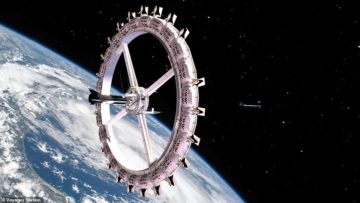
If you enjoy Air B&B vacations (or to be precise, Space B&B) check out the company Orbital Assembly Corporation, which plans to open a luxury space hotel in 2027. The hotel will be named Voyager Station. Similar to the space stations depicted in sci-fi films, it will be a large wheel floating in orbit, and will include a restaurant, gym, Earth-viewing lounges and bars. A three-and-a-half-day stay is expected to cost up to $5 million; transportation will be extra, probably on a SpaceX Dragon.
If you want to go to space, but you’re not sure what you want to do, perhaps you’d like the help of a travel agent. In that case, get in touch with Space Adventures, https://spaceadventures.com/ This company, founded in 1998, arranges for private astronauts to fly and live in space. Space Adventures doesn’t make rockets or fly passengers, it will arrange vacations, matching individuals’ interests with upcoming launches, or facilitate the creation of fully private missions. Just leave your contact information and a salesperson will get back to you. Make sure your portmanteau is packed and ready to go.
The possibilities for space tourism seem to be increasing daily. It is realistic to expect that in a few years we will be able to board a commercial spaceliner for a trip to the moon or to a space hotel, much as we imagined in 1968, when we watched the movie Space Odyssey 2001. We’ll close with that memorable scene of the traveler in the spaceliner being served by a flight attendant as she navigates zero gravity with the passenger’s drink and meal. (Click here to watch). Buckle your seat belt, sit back, relax and enjoy your flight.
